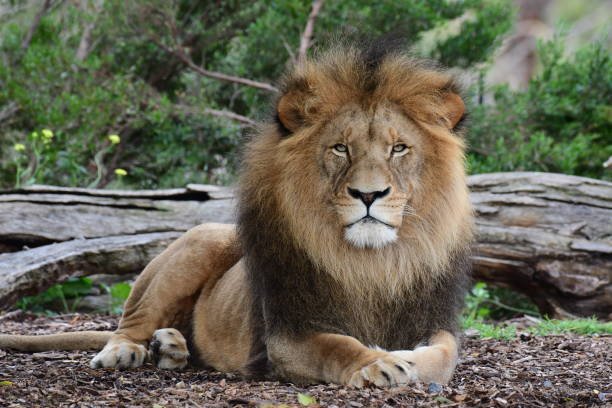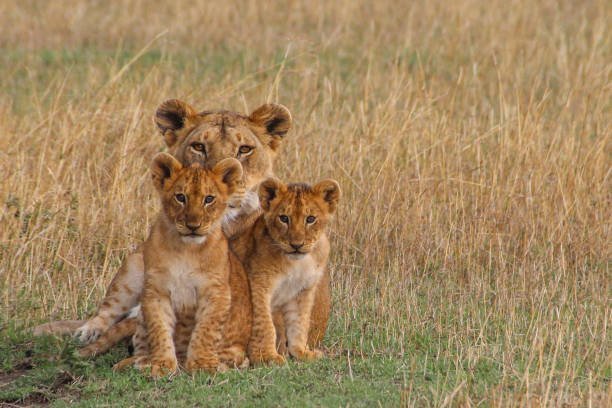Which organizations are at the forefront of lion rescue and protection?

Introduction:
In this article, we delve into the vital realm of lion rescue and protection, exploring the organizations that stand at the forefront of this critical mission. Lions, iconic symbols of the wild, face numerous threats ranging from habitat loss to poaching. Behind the scenes, dedicated organizations work tirelessly to rescue, rehabilitate, and protect these majestic creatures. Their efforts extend beyond borders, involving innovative strategies, community engagement, and scientific expertise.
In a world where wildlife conservation is paramount, understanding the key players in lion rescue becomes essential. This article delves into the work of leading organizations, spotlighting their initiatives, challenges, and the impact they make in safeguarding lions and ensuring the survival of this awe-inspiring species.
Global Wildlife Conservation Efforts:
Global wildlife conservation organizations play a pivotal role in lion rescue and protection. Organizations like the World Wildlife Fund (WWF) and the Wildlife Conservation Society (WCS) operate across continents, working tirelessly to conserve lions and their habitats.
They engage in a range of activities, from funding anti-poaching initiatives to supporting research on lion behavior and ecology. Their global presence enables them to advocate for lion conservation on international platforms, mobilize resources, and implement comprehensive strategies to address threats such as habitat loss, poaching, and human-wildlife conflicts. These organizations also collaborate with local partners and governments to ensure the sustainability of lion populations.
Local African Conservation Organizations:
Local conservation organizations in Africa are at the forefront of lion rescue and protection efforts within their respective regions. Organizations like the African Wildlife Foundation (AWF) and the Kenya Wildlife Trust work closely with communities and governments to protect lion habitats, mitigate conflicts, and conduct research.
They often engage in community-based conservation programs, involving local residents in lion conservation efforts and providing them with incentives for coexisting with these apex predators. These organizations are deeply connected to the local ecosystems and understand the intricate dynamics between lions, other wildlife, and human communities. Their work is essential for addressing specific regional challenges and ensuring the long-term survival of lions in Africa.
International Animal Welfare NGOs:
International animal welfare non-governmental organizations (NGOs) also contribute significantly to lion rescue and protection. Organizations like the Born Free Foundation and the Humane Society International focus on the welfare and humane treatment of individual lions. They often work on campaigns against the use of lions in the exotic pet trade, circuses, or trophy hunting.
These organizations provide sanctuary and rehabilitation for rescued lions, ensuring they live out their lives in a safe and comfortable environment. They also advocate for stronger regulations and laws to protect lions from exploitation and abuse. While their focus is primarily on individual lions, their efforts contribute to broader awareness of lion conservation and the ethical treatment of these magnificent animals.
These three categories of organizations, each with their unique strengths and approaches, form a comprehensive network of lion rescue and protection efforts that span from global conservation strategies to local community engagement and individual animal welfare advocacy. Together, they work to safeguard the future of lions and their ecosystems.
Research and Education Institutions:
Research and education institutions are crucial players in lion rescue and protection efforts. Scientists and researchers from institutions like the WildCRU (Wildlife Conservation Research Unit) and the Panthera organization conduct in-depth studies on lion behavior, genetics, and ecology.
Their research findings inform conservation strategies and help identify key areas for intervention. Additionally, these institutions play a vital role in educating the public, policymakers, and local communities about the importance of lions in ecosystems.
Through awareness campaigns, workshops, and educational programs, they foster a deeper understanding of lions’ ecological significance, thereby garnering support for conservation initiatives. By providing evidence-based data and knowledge, research and education institutions empower conservation organizations and governmental agencies to make informed decisions in lion protection efforts.
Governmental Wildlife:
Governmental wildlife and environmental agencies are central to lion rescue and protection efforts, as they enforce regulations, establish protected areas, and implement conservation policies. Agencies like the Kenya Wildlife Service and South Africa’s Department of Environmental Affairs are tasked with the management and protection of wildlife, including lions. They formulate and enforce laws against poaching, illegal trade, and habitat destruction.
These agencies often collaborate with international organizations, NGOs, and local communities to develop conservation strategies and initiatives. Moreover, they engage in habitat restoration, wildlife monitoring, and community development programs, aiming to balance human needs with the preservation of lion habitats. Governmental agencies also participate in international conventions and agreements related to wildlife conservation, ensuring that global efforts are coordinated for the protection of lions and their ecosystems.
Community-Based Conservation Initiatives:
Community-based conservation initiatives are fundamental for the sustainable protection of lions. Local communities often share habitats with lions and are directly affected by human-wildlife conflicts. Organizations like the Lion Guardians in Kenya and the Cheetah Conservation Fund in Namibia work closely with communities to mitigate conflicts, providing solutions such as building predator-proof enclosures for livestock and offering compensation for losses.
These initiatives also involve local residents in conservation activities, turning them into advocates for lion protection. By providing alternative livelihoods, such as ecotourism and sustainable agriculture, these initiatives alleviate pressure on natural resources, reducing conflicts between humans and lions.
Moreover, community-based conservation efforts emphasize the cultural and economic value of lions, fostering a sense of pride and ownership among local people. By integrating the needs and perspectives of communities, these initiatives create a harmonious coexistence between humans and lions, ensuring the long-term survival of both.
Conclusion:
I hope this exploration of the organization’s leading lion rescue and protection efforts has shed light on the diverse and interconnected strategies employed to safeguard these magnificent creatures. From global conservation giants to grassroots community-based initiatives, each plays a vital role in the intricate tapestry of lion conservation. Research and education institutions provide the knowledge that informs decision-making, while governmental agencies enforce regulations and protect lion habitats on a larger scale. Community-based initiatives, rooted in local coexistence, bridge the gap between human and lion populations, fostering a harmonious balance.
Collectively, these organizations create a powerful force in the battle to preserve lions and their ecosystems. In an ever-changing world where human-wildlife conflicts and habitat degradation continue to threaten lion populations, the dedication and collaboration of these organizations offer hope for a future where lions continue to roam the wild, enriching our planet with their presence. The shared vision of these organizations ensures that the roar of the lion echoes through generations to come.










Post Comment